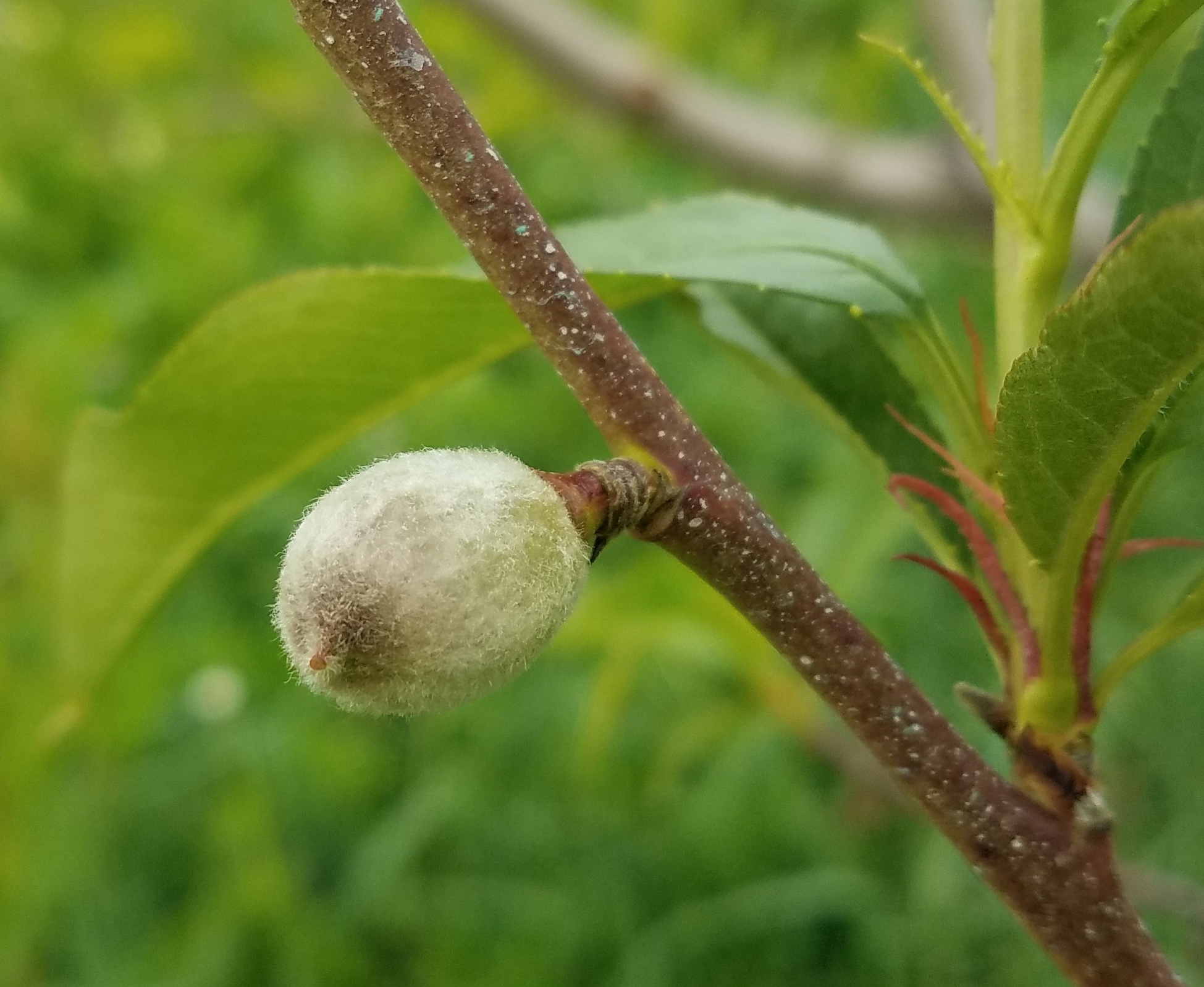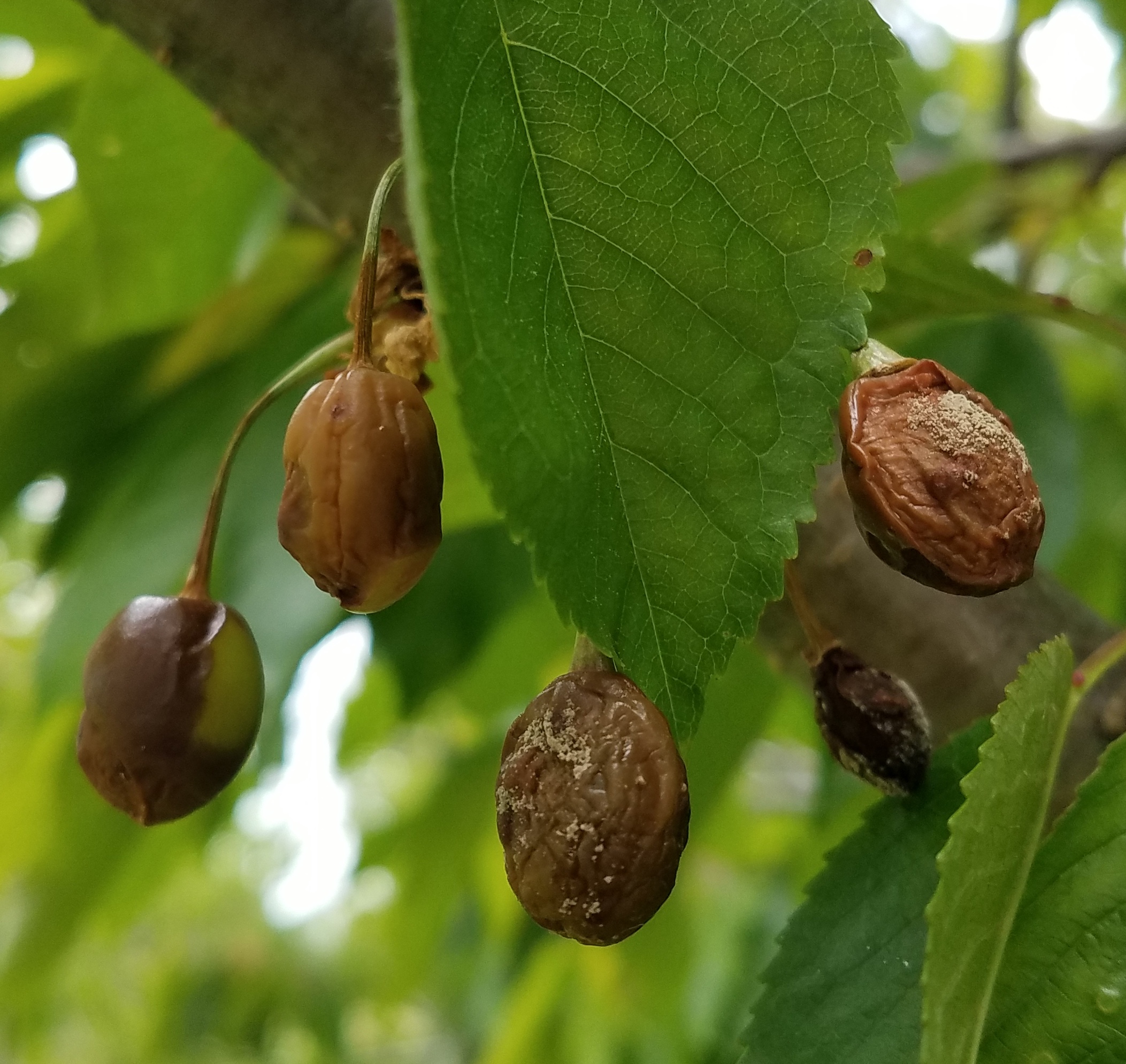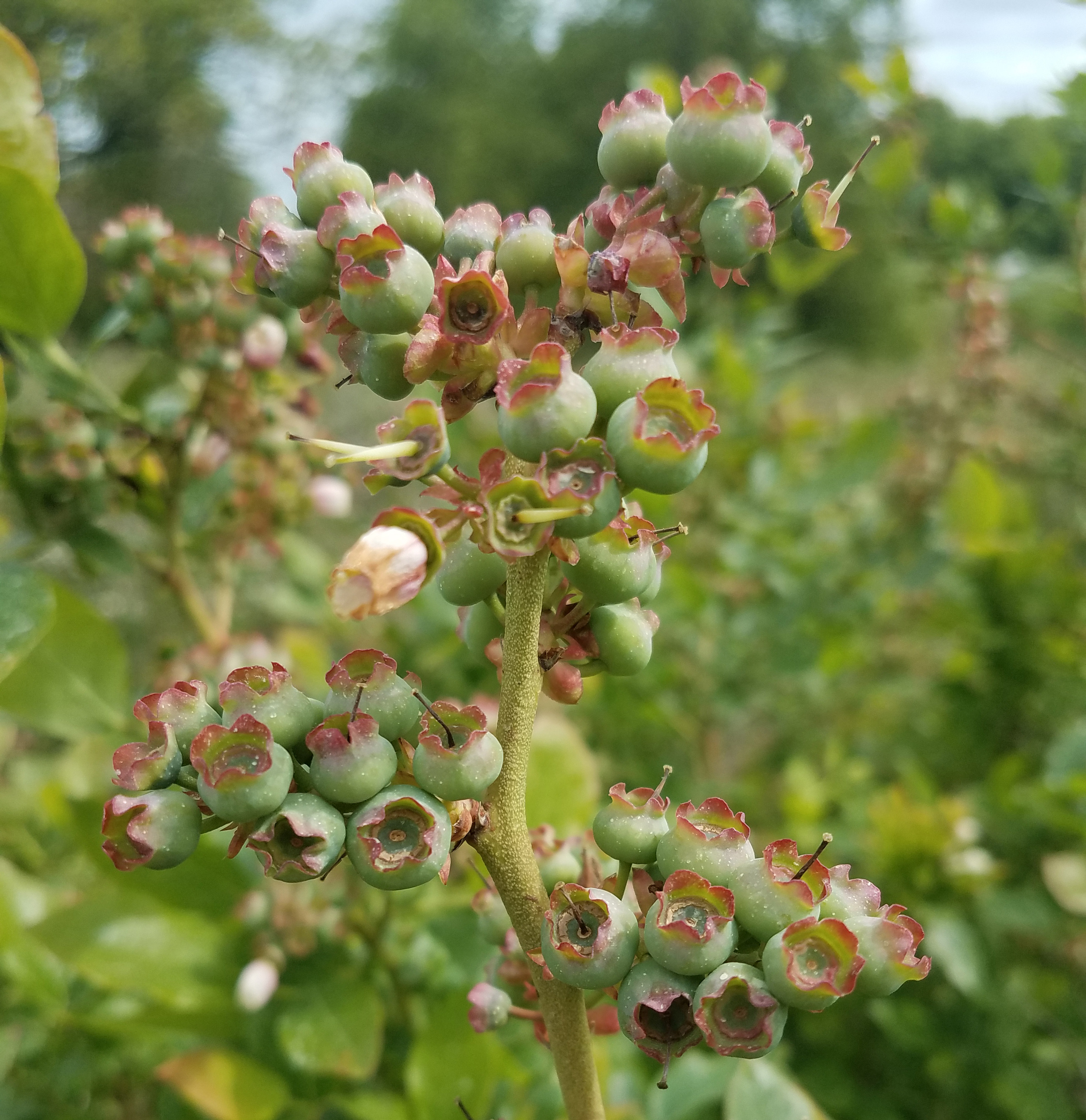Southwest Michigan fruit update – June 2, 2020
A warm, wet week caused rapid plant development and insect activity. Plum curculio egglaying was widespread.

Weather
Last week began hot with high temperatures near 90. Lows were in the 60s. Widespread rain began Tuesday, May 26, and continued through Wednesday into Thursday. This rain was a widespread infection event for many diseases. The weekend was cool and dry. Highs were in the 60s and lows near 40. There were no frosts in the region. Rainfall totals varied from less than an inch to 1.7 inches of rain. Most plants are fully leafed out. There is abundant soil moisture, but soils are drying out.
Warm temperatures will return quickly to the 80s for most of the week. There is a chance of showers Wednesday, June 3. Warm, wet rains will be infections periods for many spring diseases. With a warm week, we picked up more growing degree days (GDD) last week: 174 GDD base 42 and 120 GDD base 50, respectively 39 and 17 per day.
|
Southwest Michigan GDD summary from March 1 – May 31, 2020 | |||
|---|---|---|---|
|
Station |
GDD 42 F |
GDD 45 F |
GDD 50 F |
|
Benton Harbor (SWMRC) |
722 |
575 |
375 |
|
Lawton (Lawton) |
724 |
574 |
371 |
|
Fennville (TNRC) |
643 |
503 |
315 |
|
Average for the SW region |
720 |
572 |
372 |
|
Average last week |
546 |
418 |
252 |
Tree fruit
Tree development has been rapid and fruit are much easier to see for assessing crop loads. Bloom is done in central Berrien County. Oriental fruit moth and redbanded leafroller flights are well underway. Codling moth flight has started. There is still time to set up mating disruption for codling moth. The warm weather this past week has been ideal for plum curculio activity and reports of fruit damage are common. Before spraying for plum curculio or any other insect pest, make sure bloom is completely finished and any beehives are out of the field. Potato leafhopper adults (bright green) have moved into the area from southern overwintering sites.
Apricots are sizing rapidly.
Peaches and nectarines range around 13 millimeters in diameter. Crop potential looks better in many sites now that growing fruit are more conspicuous. Mycoshield is preferable to copper for suppressing bacterial spot populations now that fruit are exposed. Leaf symptoms of bacterial spot are showing up on susceptible varieties. Peach leaf curl symptoms range from slight to severe and are generally worse on showy bloom types.
Oriental fruit moth flight began at the end of April. The freeze on May 9 likely killed most of the newly emerged adults. This will push back development. May 12 is a good alternative biofix date for growers that saw this hard freeze. Peach scab and rusty spot control should begin starting at shuck split. Rusty spot is primarily a fruit disease problem, whereas peach scab infects both fruit and green twigs.

Sweet cherries are 14 to 16 millimeters in size. Tart cherries are approximately 13 millimeters and the crop is generally light to very light due to the spring freeze. Brown rot has been seen in sweet cherries. Sweet cherries are always susceptible to brown rot. Brown rot management is important when warm temperatures and rain occur together, especially during bloom. Regardless of the crop load, protect the leaves from cherry leafspot. See “Low spray programs for tart cherry” from MSU Extension for more information.

In plums, Japanese (Shiro) and European plum (Stanley) are approximately 10 millimeters in diameter in central Berrien County. Crop potential is generally better for European plums than Japanese types. Sprays for black knot are targeted on protecting new shoot growth from bloom to the end of shoot growth. Young fruit are prone to russet at this point. Plum curculio egglaying scars showed up over the past week on fruit in multiple orchards in the area.
Apple fruit range from 6 to 15 millimeters in diameter, depending on the variety, with natural drop due to frost damage still underway. Warm weather and rain increase the risk of fire blight. The Maryblyt model predicted multiple fire blight infection periods over the past week, with blossom blight symptoms expected to show up anytime. Growers need to maintain their sprays to control powdery mildew and apple scab. Symptoms from late March and early April infection periods are visible now on some unprotected trees. Scab ascospore counts are continuing to go down.
Cornell University has just released a new version of the apple carbohydrate model for thinning apples, version 2019. Cornell has a detailed explanation on their NEWA blog site. The thinning recommendations will be based on the GDD from bloom, percent of spurs that are flowering, and the thinning index (i.e., the average carbohydrate balance over seven days versus the older model, which used only four days). This new version has been added to Enviroweather with the older model still available for comparison.
In pears, Bartlett fruit are approximately 13 millimeters in diameter. Crop load potentials are low to fair due to low temperatures on May 9. Pear scab and watching for fire blight symptoms are the primary disease concern now. Pears are out of the fire blight blossom blight treatment window for the warmer southern part of the region. Pear psylla are becoming easier to find.
Small fruit
Grape shoots are expanding, with six to seven leaves unfolded. Juice grape shoots are about 12 to 16 inches long. Clusters are elongating. Wine grapes varieties range from 6-to 12-inch shoots. Protect new leaf tissue from powdery mildew infection, which is favored by high humidity and warm weather. The warm, wet weather this week also increases risk of black rot and phomopsis. Phomopsis sprays should be applied as leaves unfold and clusters emerge. In fields with a history of powdery mildew, choose fungicides with activity on both phomopsis and powdery mildew. Black rot control is most important later, at prebloom and bloom.
Grape tumid gall is out attacking hybrid grapes. Wild grape bloom has been found in some of the warmer sites. Wild grape bloom is used as the biofix date for grape berry moth models.
Blueberries are past full bloom. Bloom is still occurring in many varieties, and fruit in many fields are the size of small peas. We will soon be able to evaluate damage from the May 9 freeze and the effectiveness of pollination. In some fields, the growing tips of the shoots were killed by the freeze. There is regrowth starting in many places.
After full bloom, the disease focus shifts to controlling anthracnose infections of green fruit. Anthracnose is also responsible for some blossom blight and probably a lot of the shoot tip dieback we see in the interior of the plant to new shoots from the crown late in the season. See “Blueberry growers need to focus on Anthracnose fruit rot as bloom ends” for more information.
In late bloom and early green fruit, focus on anthracnose and the cherry and cranberry fruitworms, which emerge during bloom. Both cranberry and cherry fruitworm are now being caught in traps. If we continue to trap these moths (sustained catch), biofix should be Monday, June 1. Use the predictive tool on Enviroweather to time fruitworm control sprays. Intrepid is the material of choice for fruitworm control at this time. In areas where Intrepid is restricted, Confirm is a good alternative. Both of these materials are more bee safe than broad spectrum insecticides, which should not be used during bloom. See “Fruitworm control in blueberries for 2020” for more information.
Some leafroller larvae and other insects are out, but generally not in numbers that need control. Gall wasp is not generally a problem is southwest Michigan, but they have emerged as well.

Strawberry bloom is ending. Fruit are thimble size. The largest fruit are almost an inch in diameter. The major strawberry fruit pest now is tarnished plant bug.
Bramble flower buds are out and bloom is beginning. Wild blackberries are blooming. Avoid using pesticides during bloom. Scout for leafroller and sawfly, which feed on the leaves. If bloom is several days away, a broad-spectrum insecticide is effective.
Currants are finished blooming. Fruit are pea size.
Cranberry buds have opened. There is about a half-inch of new shoot growth.
Aronia is bloom is ending.
Upcoming meetings
Our regular Southwest Monday Fruit IPM Updates are available online. Our next meeting is Monday, June 8, at 5:30 p.m. You need to register to receive the login and password for these meetings. The webinars are free and one pesticide applicator credit is available for each meeting. We have over 70 growers attending our Monday meetings.
Related articles
- Southwest Michigan fruit update – May 26, 2020
- New 2,4-D formulation offers greater safety for berries, tree fruit and nut tree crops
- Effectively controlling plum curculio in stone and pome fruits
- A long wetting period could be the start of cherry leaf spot infections for 2020
- Low spray programs for tart cherry.
- Fire blight risk very high in Michigan: Consider treatment options
- Use fungicides for apple scab protection prior to anticipated early infection periods
- SDHI fungicides for apple scab management
- Grape scouting report – May 27, 2020
- Blueberry growers need to focus on Anthracnose fruit rot as bloom ends
- Michigan Blueberry Facts: Anthracnose Fruit Rot
- Fruitworm control in blueberries for 2020
- Blueberry Fruitworm Factsheet



 Print
Print Email
Email
